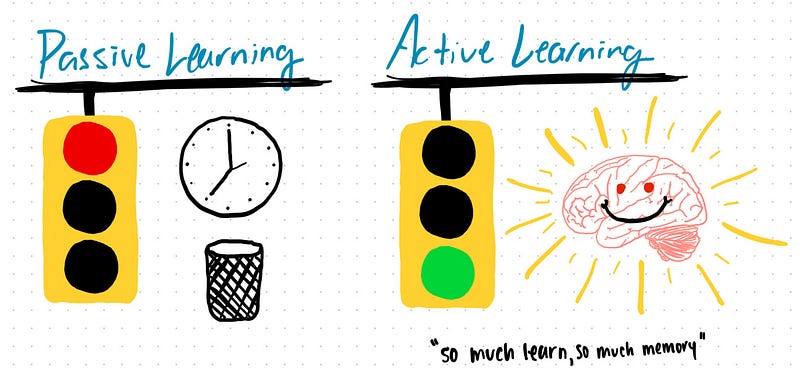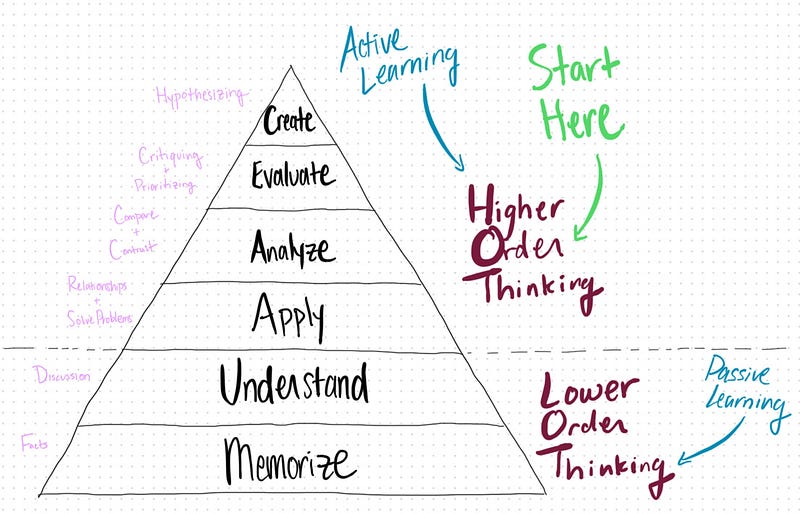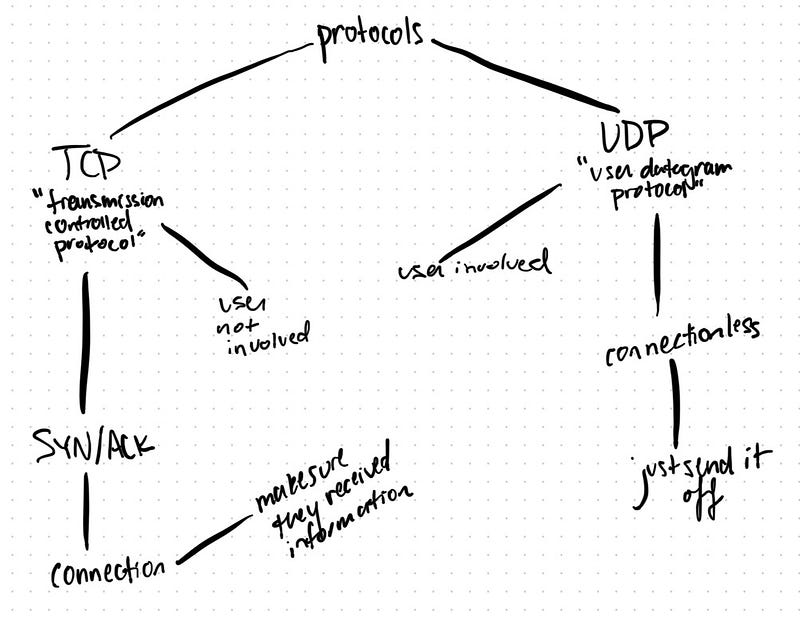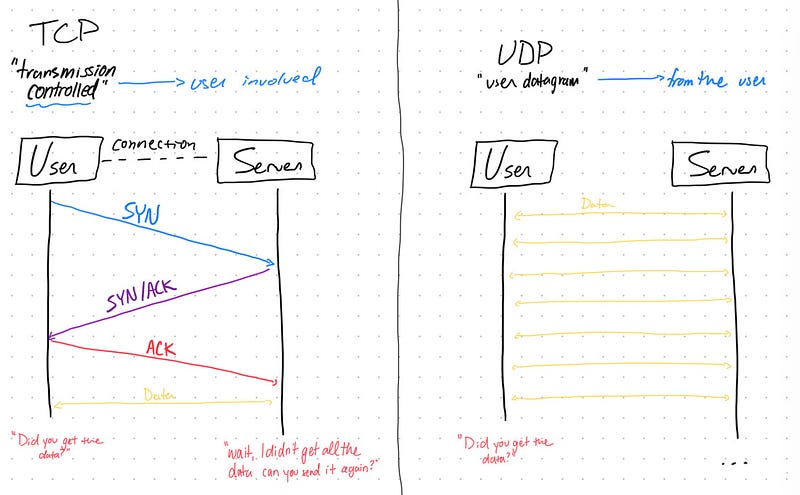Note Taking in Cybersecurity
Applying Cognitive Psychology to Cybersecurity

Introduction
Cognitive psychology is the study of how humans process information such as attention, learning, memory, perception, problem solving, and reasoning. Not only does cognitive psychology apply to learning, but all aspects of cybersecurity from behavior to biometrics to social engineering. It is about making sense of human behavior. Does this sound like Artificial Intelligence? Well, cognitive psychology and brain science are the foundations of AI.
In this article and future articles, we will be applying knowledge and techniques published by cognitive psychologists and neuroscientists to cybersecurity knowledge. Additionally, I’ll be revising past articles I’ve published to apply these concepts. I should also note, I’m a cybersecurity professional with 17 years of formal (unrelated) education, a handful of certifications, and an interest in cognitive psychology. I’m not a cognitive psychologist or neuroscientist, I’ve tested these methods and have seen a _significant_ improvement in my knowledge retention, problem solving, and how I think about things.
This is a revised version of a previous article but applying what I’ve learned since then.
Background
Before we begin, I’d recommend checking out the following articles:
Here is a brief overview:

We should avoid passive learning at all costs, it is a time waster and ends up taking a lot more time to actually learn, study, and retain the information. Instead, we should pursue active learning in forms of higher order thinking which uses complex cognitive processes. With higher order thinking, we learn and retain the information much faster and easier than passive learning and lower order thinking.
Linear vs Non-linear
You’ve probably seen some people with perfect notes and think “wow, they must be a great student!” Their information is linearly written. Linear notes are how most of us learned to take notes in school — line-by-line. Often times, this means the information is passively copied down. We just write down whatever the book, website, or instructor says instead of thinking before writing down.
Instead, we should use non-linear methods for our note taking. No, this does not mean flashcards! Non-linear notes are those that are not written line-by-line, they are written in the way we think about them. How does that make sense??
Both higher order thinking and active learning require our brain to work through the information and form relationships. The same tools should be applied to note taking — enter non-linear notes. These notes should be a representation of how we think about the information.
As you practice effective non-linear note taking, you’ll notice you think about the information before writing anything down. Delayed note taking is an effective way to apply processing of information. Over time you’ll naturally start forming relationships between concepts or ask how it applied in everyday life. As we learn information, our notes should evolve too. Especially in the beginning, you’ll most likely have a horrible sketch of the information where most is inaccurate. With practice, your notes will become clearer and relationships will be defined.
Mind Maps
One excellent non-linear note taking method is mind mapping. Effective mind maps combine the levels of Bloom’s Taxonomy.

Let’s apply Bloom’s Taxonomy to understand what makes up an effective mind map:
- Mind maps should be a overview of the information. Therefore, we have to prioritize what information is relevant to the overall idea. At the beginning, throw out details. Bloom’s step: Evaluate
- Mind maps should compare and contrast information. What are the differences between two concepts? Bloom’s step: Analyze
- Mind maps should form relationships between concepts. How does this relate to that? Bloom’s step: Apply
As our knowledge of the subject evolves,
- Mind maps should be a tool to lead to discussions. We will be able to look at the mind map and quickly be able to find the information we need to assist in the conversation. Bloom’s step: Understand
- Mind maps shouldn’t have too many details, but if we start with the higher orders of Bloom’s theory, the details will be easier to memorize. They will become relevant to the overall concept and be more intuitive. Bloom’s step: Memorize
What are some lessons learned about effective mind maps?
- Overall idea of the process/concept. Don’t prioritize details.
- Clearly defined relationships. Easy to understand the idea.
- Pictures are great!! Easy to find specific information. It’s easier to find a piece of information through a picture than 10 written pages.
- Clear up the major topics then fill in details. Have a general understanding before tackling details.
What does a bad mind map look like?
- Using bubbles or clouds with a central idea. Software or hand-written.
- Uses just words. Basically linear note taking.
- Has lines all over the place. Relationships aren’t clear and searching is difficult.
Example
Let’s use mind mapping to understand the difference between TCP and UDP. Here’s a bad example:

- No real relationships.
- Basically, linear format. Bad for search-ability — have to read through everything for larger maps.
- No understanding of the protocols. What communicates with what?
- Not going to be easily expandable for future details.
Here’s a good example:

- Relationship between TCP and UDP — they’re both protocols
- Understanding of the protocols — Connection type between the user and server. Responses given vs not-given.
- Easily able to fill in future details.
- Super easy search-ability — ”what’s UDP again? oh yeah, connectionless.”
Overview
Mind maps should be a representation of how we process information. Effective mind maps use higher order thinking and active learning. An effective mind map to learn and study information should:
- Overview of the information
- Compare and contrast information
- Form relationships
- Lead to discussions
- Not have too many details
- Use pictures
- Be easy to find specific information
A huge shout out to Justin Sung on Youtube who has saved my butt may times in learning, note taking, and studying! Definitely check his content out!
Helpful Resources
- Justin Sung: https://www.youtube.com/@JustinSung
- Mike and Matty (Cajun Koi Academy): https://www.youtube.com/watch?v=g7j_CoKD1Xs
Find value in this? Subscribe!






